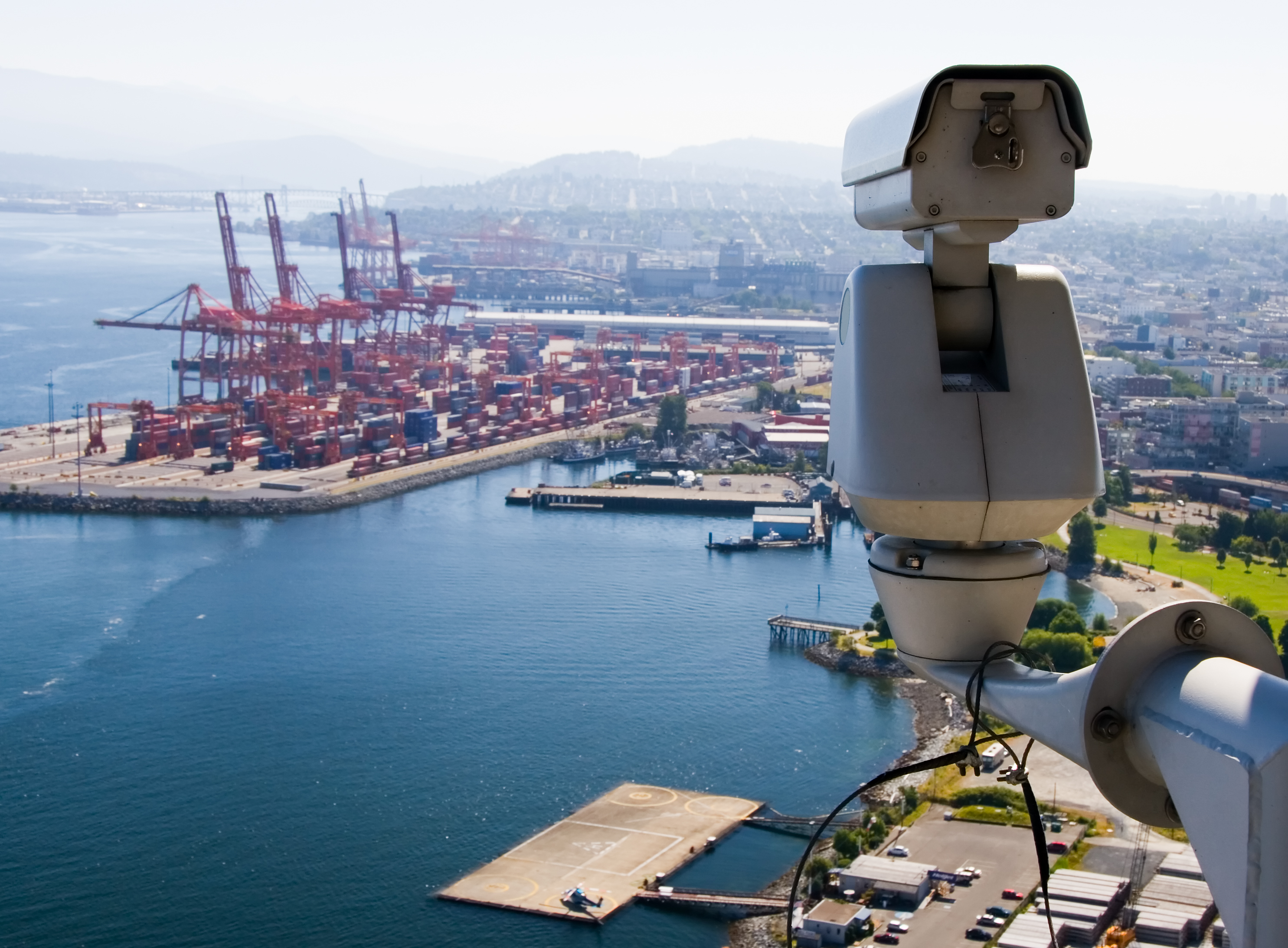
With global trade under pressure from shifting geopolitical dynamics, climate risk, and cyber threats, ports are racing to modernise their security infrastructure. What was once a matter of building bigger fences and posting more guards is now a domain of AI, data fusion, and integrated command systems. In the age of smart ports, maritime security is becoming smarter too.
A New Era for Port Security
Global seaborne trade accounts for over 80% of world merchandise by volume, and this majority is set to grow further in the coming years. These larger trade volumes make ports a bigger, more inviting target for all manner of illegal activities. Physical intrusions, terrorism, trafficking, cyberattacks, not to mention climate-related disruptions are all putting pressure on port authorities and operators to develop their security capabilities.
AI-Driven Surveillance and Threat Detection
Traditional video monitoring is no longer enough for modern ports. Today’s surveillance systems rely on high-definition, thermal and radar-equipped cameras augmented by artificial intelligence. AI and machine learning allow ports to detect suspicious activity, track unauthorised movement, and reduce false alarms by learning normal patterns over time.
Exemplar: Port of Rotterdam, Netherlands
One of Europe’s busiest ports has deployed AI-enhanced surveillance as part of its broader digital twin initiative. This allows port authorities to model daily activity, simulate security events, and monitor real-time risks from a centralised digital platform – improving both efficiency and security readiness.
Physical Access Control Meets Biometric Verification
Maintaining uncompromised access to sensitive areas like cargo terminals and data centres must be an unbreakable element of any port’s security strategy. Ports are moving beyond keycards and PINs toward multi-factor authentication, integrating biometric systems such as facial recognition and fingerprint scanning with smart ID badges and geofencing.
Exemplar: Port of Los Angeles, USA
As part of a larger port security upgrade, Los Angeles has implemented biometric screening for staff and contractors. These upgrades help ensure that only authorised personnel access high-risk areas, while also creating detailed audit trails for accountability.
Cybersecurity as an Operational Imperative
With digitalisation spreading across port infrastructure, from container management to vessel scheduling, ports now have a broader ‘’attack surface’ to cover on the cybersecurity front. Ports are increasingly becoming targets of ransomware and espionage, and many are now treating cyber defence as core infrastructure, not just an IT consideration.
Exemplar: Port of Singapore
Singapore’s Maritime and Port Authority (MPA) has introduced a robust Cybersecurity Code of Practice, backed with continuous support from its dedicated Maritime Cybersecurity Operations Centre. The initiative enables real-time threat monitoring and response across all critical systems, underlining the importance of maritime trade to this island nation, and the lengths to which its government will go to protect it.
Fusion Command and Control Centres
Integrated command centres combine data from multiple sources – CCTV, motion sensors, environmental monitoring, vessel tracking systems – into a single operational picture. These centres enable rapid threat detection, coordinated emergency response, and predictive risk analysis.
Exemplar: Jebel Ali Port, UAE
DP World’s flagship port in Dubai has developed a high-tech control centre that monitors everything from physical security and fire safety to crane activity and environmental conditions. The centralisation of data helps identify incidents faster and reduce downtime during disruptions.
Automation with Built-In Safety Protocols
Automation is reshaping cargo handling, warehousing, and transport across ports. But as autonomous cranes and vehicles become more common, security protocols must evolve to better protect their operations and humans who oversee them. Ports are integrating real-time monitoring, geofencing, emergency stop systems and AI oversight into automated workflows.
Exemplar: Port of Qingdao, China
As one of the world’s first fully automated terminals, the Port of Qingdao uses 5G-connected autonomous vehicles, AI and sensors to move its containers efficiently, while safety systems are layered into every component to ensure both cyber and physical risks are managed in real time. The port continues to build on its automation capabilities, consistently setting annual records for automated throughput while maintaining industry leading security standards.
Environmental and Climate Security
As climate risks increase, ports are at greater risk of being disrupted by storm surges, sea level rise and extreme weather. This has led to an increase in environmental resilience measures being adopted by the most at-risk port locations. Flood barriers, early warning systems and climate-adaptive infrastructure are now an established part of the port security asset list.
Exemplar: Port of Antwerp-Bruges, Belgium
This port has invested in climate sensors, digital flood mapping, and resilient infrastructure as part of its broader “smart and sustainable” strategy. These initiatives not only support safety, but also business continuity in extreme weather conditions.
Collaborative Security Ecosystems
Modern port security doesn’t operate in a vacuum, it relies on close coordination between customs, immigration, police, coast guards, and even private logistics partners. Secure data sharing platforms, joint drills, and cross-border alert systems are collaborative agreements and measures that are essential for modern port security.
Exemplar: Port of Hamburg, Germany
Through its smartPORT initiative, Hamburg has integrated multiple agencies and stakeholders into a unified digital platform that oversees logistics, security and traffic. The collaborative approach enhances both efficiency and threat preparedness, reinforced by the Hamburg Port Security Centre, opened in June 2024, which is operated jointly by the police, customs and the Hamburg Port Authority.
Security as Strategic Advantage
Maritime security is no longer just a box to tick for compliance – it is emerging as a key differentiator for ports in a competitive global market. Operators who invest in seamless, smart, and secure infrastructure are better positioned to attract shipping lines, investors, and digital trade flows.
This makes the integration of security with broader smart port initiatives essential. From AI to climate resilience, the technologies deployed must not only protect but also enable ports to become faster, safer, and more adaptive. As global shipping continues to evolve, ports that prioritise security as part of a long-term innovation strategy will not only withstand disruption, they will also help shape the future of maritime trade.